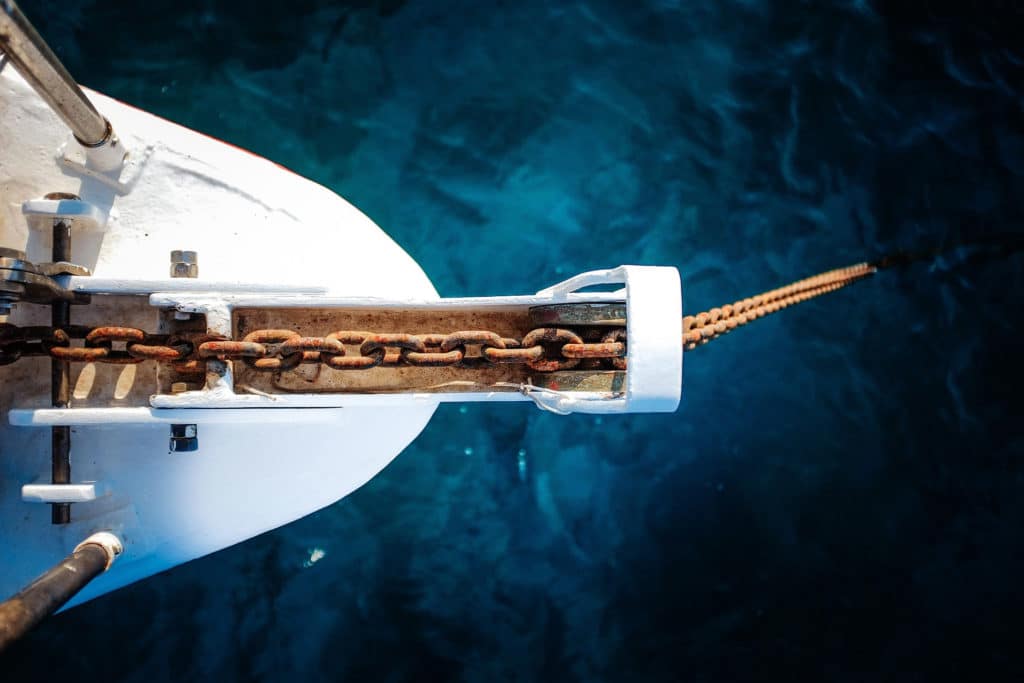
The squall line seems to come out of nowhere. Within minutes, the whitecaps are huge, and you’re fighting just to hold position and keep the bow into the wind. If things get any worse, or the engines fail, you could be in real trouble. Do you know what you should do?
The Action Plan
When dropping the hook or running for shore isn’t an option, mariners have long depended on sea anchors to keep them in place. If your boat is equipped with one of these underwater parachute-like devices, practice rigging and deploying it so you’ll be ready for the real thing. If need be, you can rig a makeshift sea anchor from a variety of on-board objects. The goal is to create drag to slow your drift and keep the bow to windward. Floating objects provide minimal drag, while heavy sinkers might snag the bottom in shallower water, or create excess downward force in deep water. One solution is to combine floating and sinking elements — such as clipping a float ball a few feet up an anchor chain. Pay out enough line to create some shock-absorbing slack, and run the line through a bow chock and then back to the stern. This way, you’ll be able to release the rig in an emergency without venturing onto the foredeck.
* * * * *
The U.S. Coast Guard is asking all boat owners and operators to help reduce fatalities, injuries, property damage, and associated healthcare costs related to recreational boating accidents by taking personal responsibility for their own safety and the safety of their passengers. Essential steps include: wearing a life jacket at all times and requiring passengers to do the same; never boating under the influence (BUI); successfully completing a boating safety course; and getting a Vessel Safety Check (VSC) annually from local U.S. Coast Guard Auxiliary, United States Power Squadrons(r), or your state boating agency’s Vessel Examiners. The U.S. Coast Guard reminds all boaters to “Boat Responsibly!” For more tips on boating safety, visit www.uscgboating.org.








